Many forms of awareness training exist. Some choose to conduct day-long seminars each year for the entire organization. Some prepare a huge pile of documents to go through, and others may send a small group of employees to a course and then expect them to teach it to everyone else. However, cyber security training can be difficult to implement effectively for several reasons. For example, your team may get bored, they may forget what they have learned, and it’s always hard to tell whether the training was successful. In this article, we have boiled down our experience providing awareness training into 11 concrete tips that you can use to take your efforts to the next level.
#1: Start by getting your employees on board
The first step to creating an effective security awareness training program is getting your employees to care about the process. To get your employees’ support for the training, it is helpful to begin by explaining why the training is valuable, and not just something to quickly get through to check it off their to-do lists. If your team understands the purpose of the training, they will be more committed to improving the security culture of your organization. Also, they will be more likely to remember and use the key lessons from the training, which is the whole point!
#2: Endorse the security training across your organization
Security training should not be a project that is only pushed to the employees by the IT department. In order to succeed, the security awareness training needs endorsement from management throughout the entire process.
Without it, your team probably won’t be motivated to allocate their time to awareness training, and they might have reservations about doing the courses.
Getting team leaders and management across your company to promote the cybersecurity training will show your employees that everyone is responsible for creating a secure company – not just the security or IT department. It can also encourage open communication about the training or other topics in security awareness.
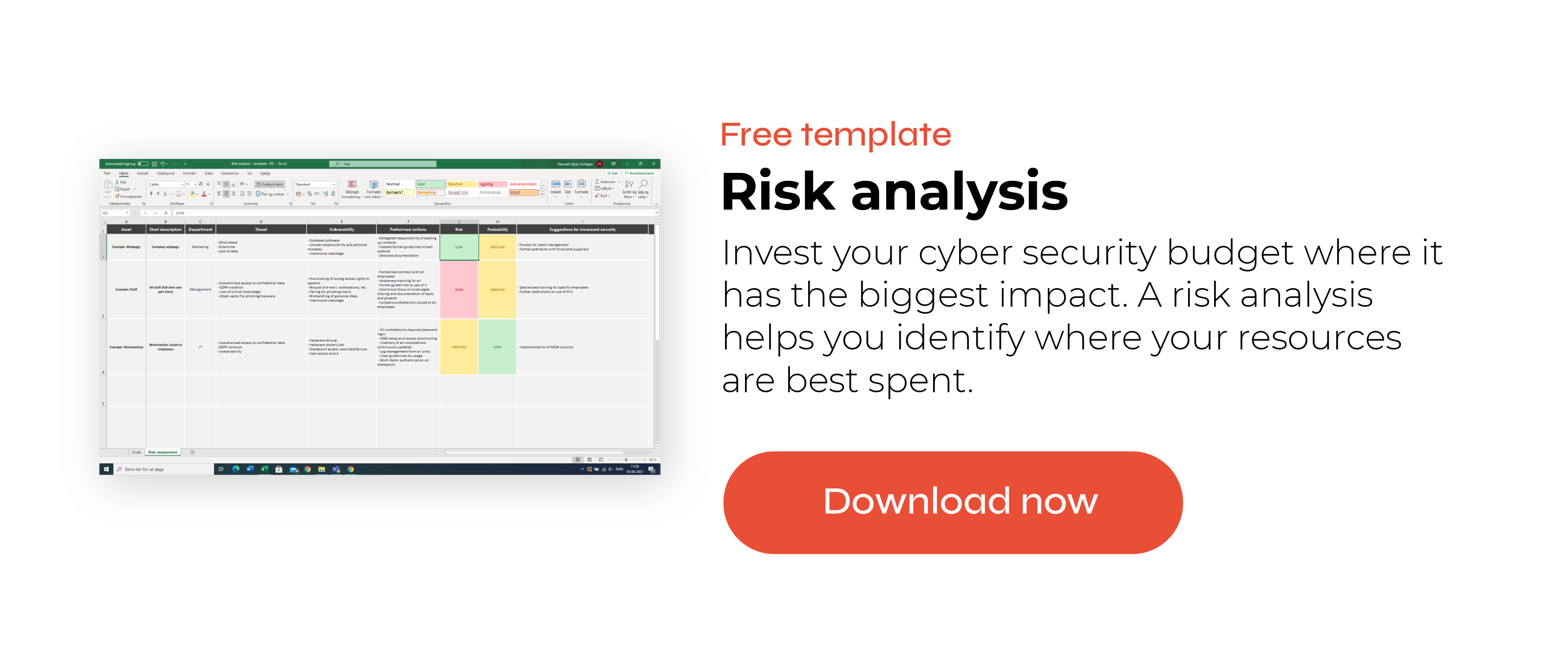
#3: Show both the personal and organizational importance of security awareness
Everyone cares more about things that could impact them personally. That’s why we recommend security training programs that teach why good security practices are important in both personal and work environments.
Since personal data breaches can negatively impact both employees and the company, showing your employees what they personally risk from a data breach can make them take the training more seriously.
Addressing the personal aspect of data security also trains your employees to regularly practice good cyber hygiene, both at work and at home. In short, these good habits will become standard practices in their lives instead of something they have to remember to do while they are at work.
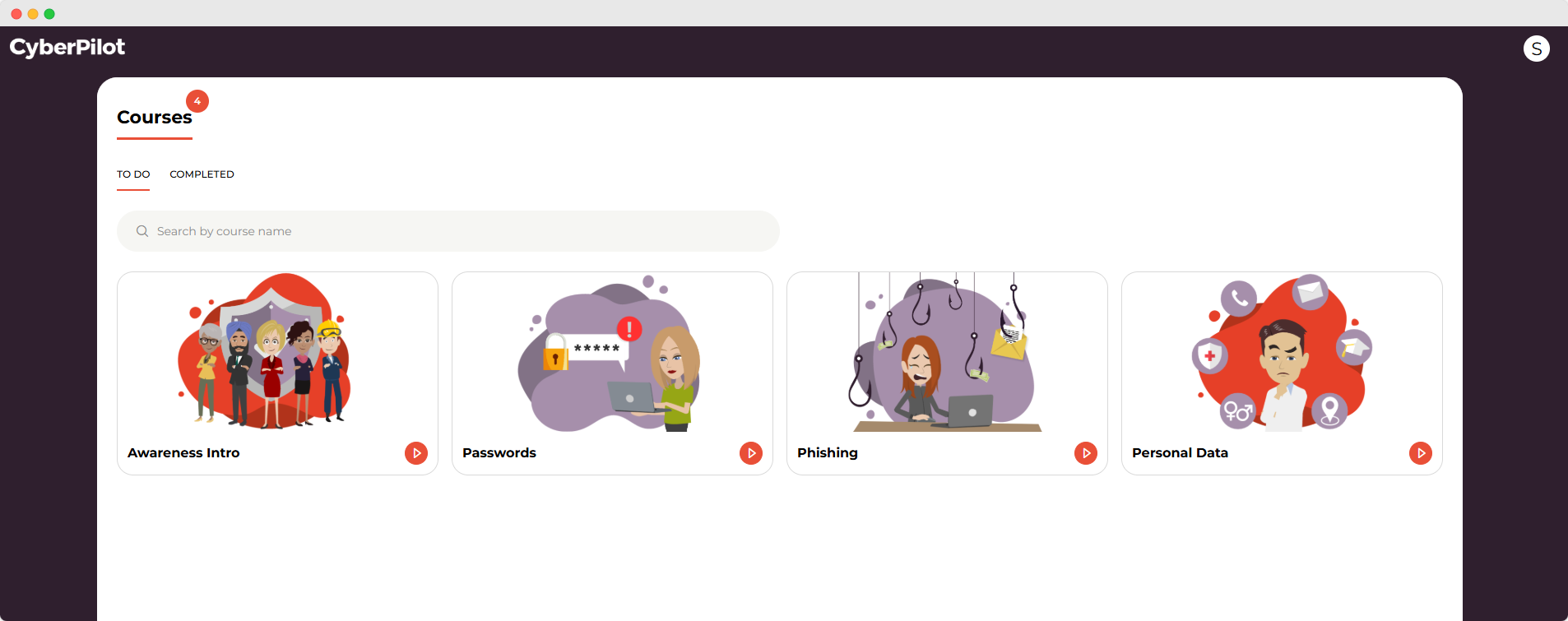
(Example of simple short courses from our app)
#4: Keep it simple
One of our most important tips for successful security awareness training is to make the content relatable and easy to understand. Remember that most of your employees don’t have a technical background and that it’s easy to be discouraged by training when you have to Google every other word.
Fancy jargon can make employees feel even more distanced from the world of IT security. If they don’t understand what the risks are, they won’t be able to protect themselves or the company from threats.
So, you should explain topics in plain, conversational language. This will increase learning and make your employees more excited to participate in the security training, leading to a successful program over the long-term.
Also remember that you don’t need to cover everything there is to know about a topic in one lesson. By breaking up lessons into small pieces, you can grow your employees’ knowledge over time without overloading them with information.
#5: Give it in small pieces
From passwords to phishing attacks and from the GDPR to social engineering, there is so much to learn about IT security. In security awareness training, it is impossible for your employees to cover, digest, and retain all that information at once.
You cannot give someone the entire set of Harry Potter books, then expect them to read all of them within a day and remember everything that happened.
That’s why information security training should be given in small pieces, over a long period of time. This way, you will give your employees time to reflect, practice, and breathe, while keeping IT security on the agenda for longer. We recommend short training sessions of 5-10 minutes.
Our platform makes it easy for you to plan your courses and phishing campaigns. You spend less time on admin stuff and more time getting the important things done. Plus, now you can schedule everything months in advance.
A training schedule could look like the picture below, which shows a mix of courses about IT security and the GDPR from our own catalogue:
 We also have a recommended course plan for the first year, that you can have a look at.
We also have a recommended course plan for the first year, that you can have a look at.
#6: Provide relevant content
The security awareness training should be suitable for all employees in all departments of your organization. You do not need to explain technical details about how computers work or dive deeply into regulations about information security. You simply need to create content that can be understood by all. Learning about IT security should not give everybody grief, but it should be something your organization can become confident about.
Try to create courses that are both educational and entertaining, and that are tailored to fit your employees rather than your IT department. Nobody should be bored while taking the courses. One way to do this is by using current examples to clarify concepts and show how security mistakes happen. Simple, easy to understand content also works well.
An example could be how to explain what a ransomware attack is, as seen in the picture below:
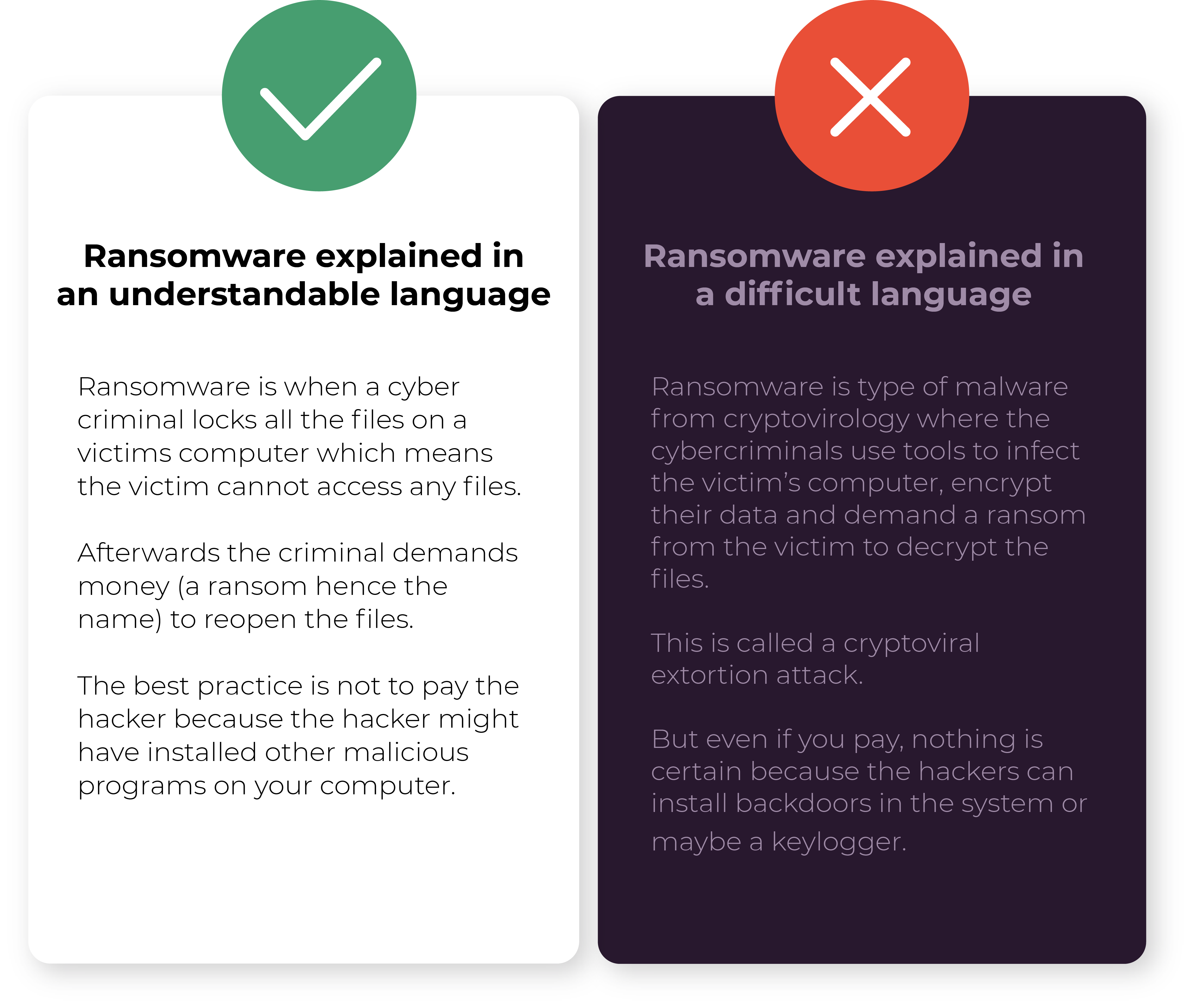
Which one of those texts would you rather read?
#7: Make it interactive
Adding interactive methods is an easy way to keep security awareness training interesting. For example, you can give your employees a short quiz on the key lessons of a course after the training. The use of quizzes serves many purposes: it keeps your employees engaged in the security training and it gives you a way to measure their learning. Interactive methods ensure that your employees remain active participants in your cybersecurity training program. The more your employees participate in the learning process, the more they will understand the important role they play in keeping your organization safe.
On our platform, tracking your awareness and phishing training progress is easy. You can quickly see who needs new courses and who hasn't completed them yet. This gives you a clear overview to help you stay on top of everything.
#8: Convenience is key
Security awareness training is an extra task you are asking your employees to complete. For this reason, they shouldn’t have to spend time figuring out where to find the training or how to access it.
It’s often helpful to create a security training resource location, maybe in a shared folder or on a platform that your employees have accounts for. Here, your employees can find all the great content you have around IT security.
Another way to make training as easy as possible for your employees is to send them an email with a link to the specific training you would like them to complete.
Making training easy to complete is a simple step, but it will improve participation in your security training program and show your employees that you value their time.
#9: Use varied learning methods
Awareness training is an ongoing process. To keep your employees engaged, it’s important to use a variety of learning methods.
For example, in addition to small e-learning courses, you can use videos to show examples, interactive slides to explain concepts, and quizzes to test your employees’ knowledge.
You can also keep security top of mind through real phishing simulations or by hanging posters or infographics around the office.
These touchpoints will make it more fun for your employees to work with IT security and to maintain security awareness. There are many ways to create and maintain awareness – your imagination is the limit.
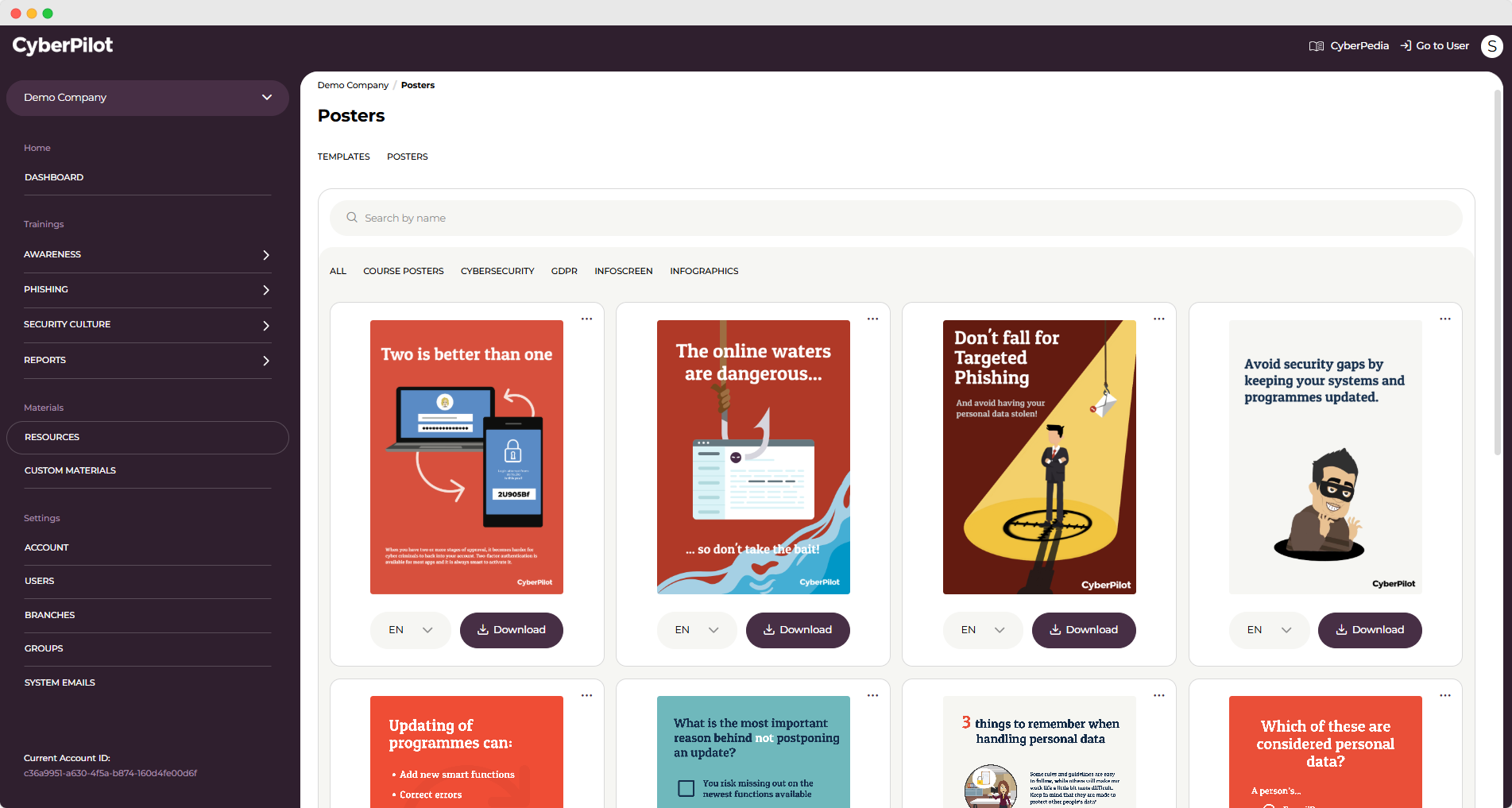
(Example of free posters in our app)
#10: Provide continuous learning
The most important take-away from this article is that awareness training is not a one-off project, but an ongoing effort. It should be customized, monitored, and tailored along the way based on the needs of your organization and your employees.
While it should be continuous, you should avoid just showing the same videos or giving the same presentations year after year. That is the fastest way to bore your employees! Instead, you should switch up what you are covering in your security awareness training. Our course catalog has some examples of the different topics you can teach your company about over time. There will always be new case studies or examples you can feature in your training. This is especially important, because cybercriminals are adapting too. Security training from a few years ago simply won’t be enough for the years to come.
New employees need training, too!
It’s also important to apply the continuous learning principle to your new hires, since they are most vulnerable to attack. New hires can be the biggest risk, since they aren’t familiar with what kind of emails are normal to receive within the organization and usually want to make a good first impression. Therefore, they may be a little too quick to click a spear phishing email from a “colleague” requesting urgent turnaround. Make sure you find a good balance between catching new employees up on training, while creating new security trainings for the rest of your company.
We've made getting started super simple. New employees are automatically synced, allowing them to begin their awareness training immediately. This ensures that all employees are familiar with important security guidelines from day one.
#11: Follow up with your employees
Once you have rolled out your security training, you must continuously monitor the progress of your employees so that you can measure how effective the training is.
Try to seek feedback from your employees regarding the courses and the overall awareness training. What do your employees like about the courses, and what do they not like? Security awareness training should be valuable and beneficial for your employees. If your team is not enjoying the training, you can count on the results to suffer.
Awareness training is a dynamic process – you should try to learn from your team and adjust the training accordingly. If your employees are not taking the courses, why is that? Do they need more time to complete the courses? Should the content be even more tailored? Try to figure out the reasons behind it and act accordingly to fix the problems. Make sure that awareness training is fun and something your employees want to do.
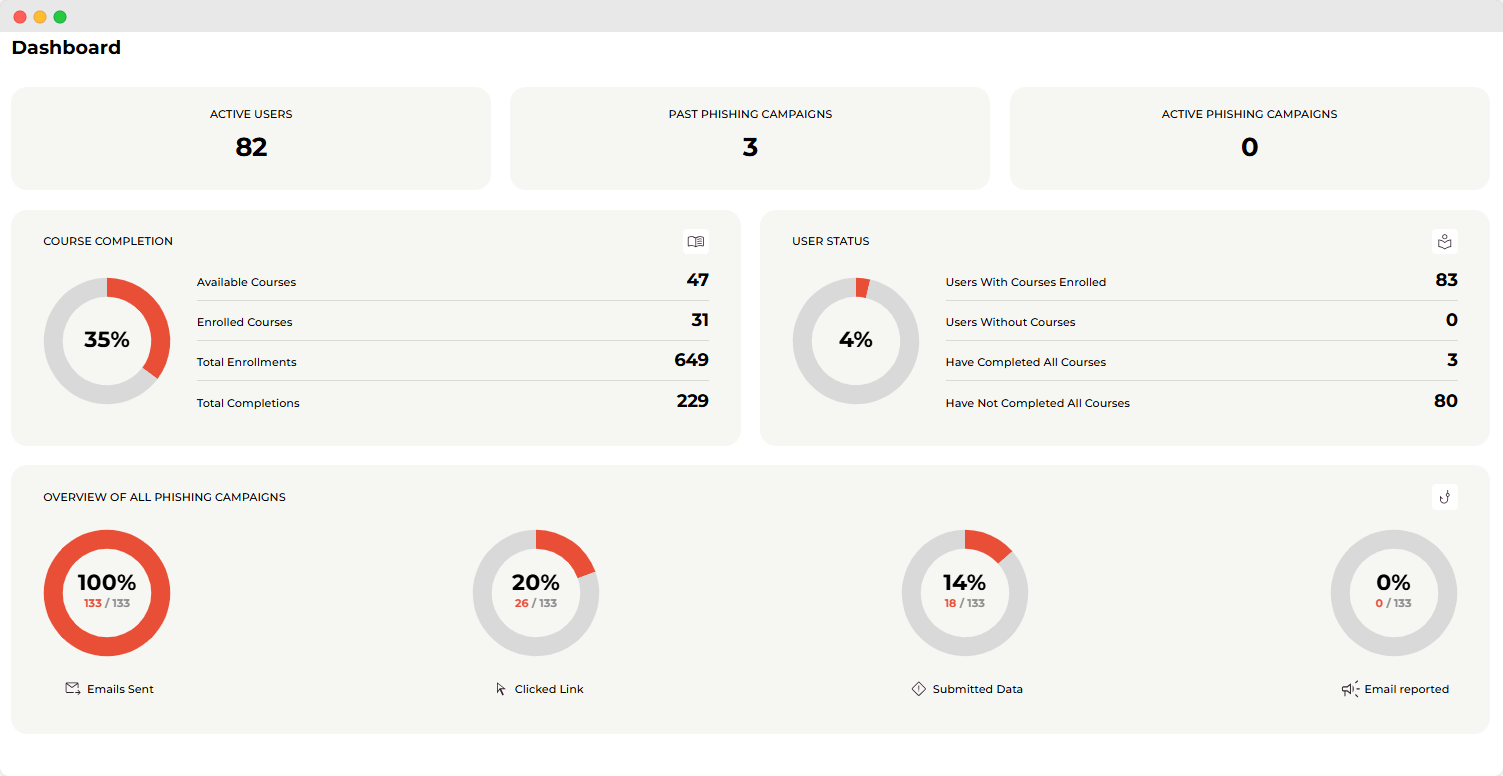
(Example of the dashboard where you can follow the training in our app)
Should you work with an information security training provider?
Continuously providing security training can take a lot of time, so some choose to partner with a security training provider. Online courses can help you train your staff without taking too much time to develop the security training materials yourself. This method of e-learning is popular, since it requires less coordination than in-person events and allows people to complete the training when the timing is right for them.
We hope that the tips in this article will help you achieve your security awareness training goals. You are welcome to get in touch with our expert team if there is anything we can help with.

